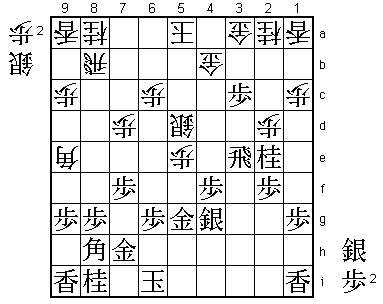
 |
| Diagram 1 |
In games between shogi professionals, both players strive to keep the balance so that too big a gap does not open up in the position. This makes it very hard to end a game with a beautiful mating sequence. From time to time, a brilliant move leads to an almost problem-like finish, but if Black can play such a move you can be fairly certain in most cases that White made a blunder a few moves earlier. Shogi is essentially a game that is decided by mistakes. Brilliant moves are brought about by bad moves.
Although I would not describe it as brilliant, in the position in Diagram 1 I was considering a forcing sequence that might clinch the win, but the line I had in mind just did not seem to work. Up to this point, neither Black nor White has played a move that could be called bad. In such circumstances, a spectacular move leading to a pretty finish is very rare.
Always keep in mind that it is more important to try to avoid making a mistake rather than to play a brilliant move. You should also remember that if your opponent has not made a mistake, trying to do the impossible by forcing the issue is usually just wasted effort.
Let us take a look at the line that tempted me in Diagram 1. It certainly looks like the kind of position where there might be neat winning sequence, and of course that was my first impression too.
The first stage (from Diagram 1) is P-3b+ G3ax+P; Bx5e (Diagram A). If White replies ... Sx5e; Rx5e forks king and bishop. But in Diagram A, White has the sharp defense ... R-8e. Against this, the discovered check B-7c+ would be fine after ... Bx7c; Rx8e, but White can take back with Nx7c, defending the rook on 8e.
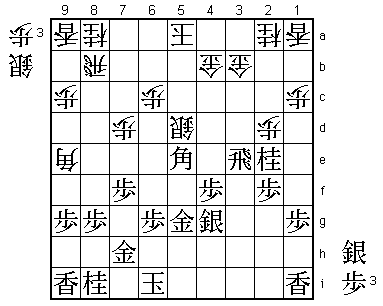 |
| Diagram A |
The move I had in mind in reply to ... R-8e, and the kernel of my whole concept, was S*5c (Diagram B).
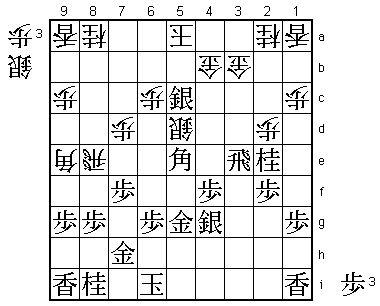 |
| Diagram B |
If White plays ... Rx5e, there would follow Rx3b+ Gx5c; P*5f R-8e; N-7g R-8c; +R-7b (Diagram C).
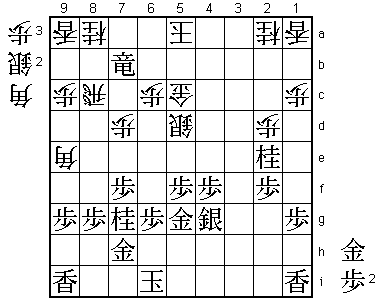 |
| Diagram C |
Black has given up his bishop, but since he is threatening mate and White's rook on 8c, the position is winning. In this line, it is quite fortunate that White does not have any good squares for his rook when it is chased with P*5f and N-7g.
Let us return to the position in Diagram B. After the silver drop S*5c, White must block the path of the rook on 3e. He has two ways of doing this: ... P*3d and ... P*3c. Against ... P*3d, Black plays B-7g. Since ... Bx7g+ is answered by Rx8e, White must take the rook with ... Rx3e, when play would continue Bx9e K-4a (if ... Rx9e; B*6b); P*3c (Diagram D).
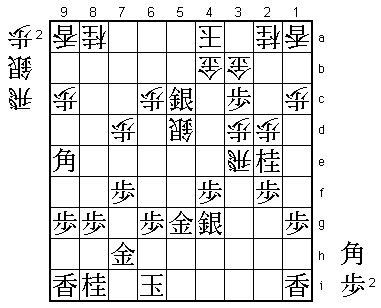 |
| Diagram D |
This is quite a tricky position. Instead of the pawn drop P*3c, the bishop move B-6b+, escaping from the rook's path and menacing White's king, seems natural, but with the bishop out of the way, White can win quite simply with ... R-3i+; P*5i R*2i. On the other hand, the pawn drop on 3c while the bishop keeps watch from 9e is a very severe attacking move.
... Rxe5 is looking good for me. The variation after... P*3d gives Black good attacking chances. So why didn't I play this line?
In Diagram B, instead of P*3d, the rather feeble-looking P*3c is actually the best defense. After B-7g Rx3e; Bx9e we reach Diagram E.
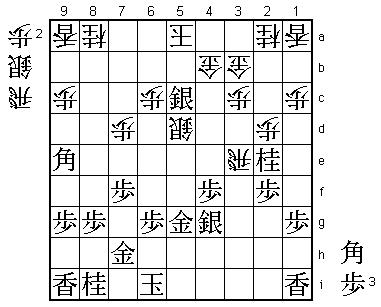 |
| Diagram E |
Here ... Rx9e can be answered by B*6b K-4a; Sx4b+ Kx4b; Bx9e+ with a winning position for Black. But if the White king simply escapes with ... K-4a, Black cannot drop a pawn on 3c as in the previous variation and has no clear way to continue his attack. So this line seems to be no good after all.
It would be a wonderful feeling if Black could win by a series of brilliant-looking moves like Bx5e, S*5c and B-7g, with his major pieces producing a dazzling display of fireworks over the whole board. I must say I was tempted, but after 25 minutes' thought I regretfully had to abandon this variation, having reached the conclusion that it was refuted by ... P*3c and ... K-4a. Instead, I played the unspectacular S*3b.
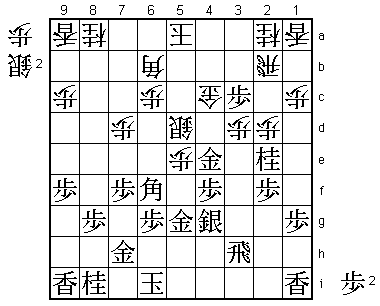 |
| Diagram 2 |
This was a rather unspectacular continuation, quite unlike the fierce cut and thrust of the variations we have just looked at. Black and White are both playing normally, taking care not to give the opponent the chance to play a great move. Unspectacular and quite professional, one might say.
The aim of G*4e is quite simple. If ... Px2e, P-3b+ Rx3b; Gx5d Gx5d; S*4c. If ... Sx4e, Px4e with Bx5e to follow. If White is able to take the knight on 2e with impunity, Black's attack will grind to a halt. G*4e enables Black to continue the attack without giving White time to take the knight. At the same time, it aims to remove the opponent's defending pieces, which is the most fundamental attacking method in shogi.
From Diagram 2, play continued ... S*6e; Gx5d Sx5d; S*3b (Diagram 3). This crude-looking silver drop is actually a good move. White has no good way of defending against the dual threat of Sx4c+ and Sx2a+ Rx2a; P-3b+.
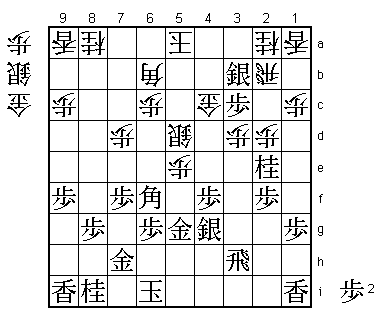 |
| Diagram 3 |
Realizing that he had no defense, Kiriyama 9-dan went onto the attack with ... Px2e. I continued the assault with Sx4c+ Sx4c; Bx5e, reaching the position in Diagram 4.
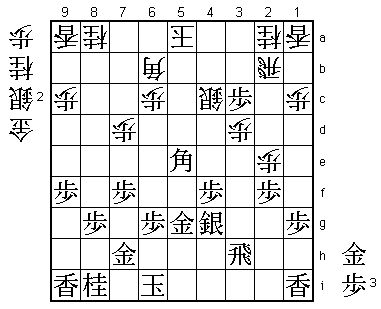 |
| Diagram 4 |
The solution is P*5c Rx5c; Bx9a+ (Diagram 5)
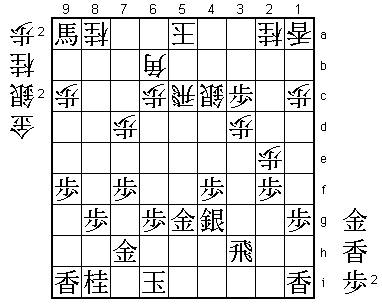 |
| Diagram 5 |
If now ... Rx5g+, L*5h wins the promoted rook. Once you've seen this far, you realize that there is no need to defend the gold.
White answered Bx9a+ with ... N*6e. This is quite an unpleasant counterattack to face. If the gold escapes with G-5f, White has the annoying pawn drop P*8h (Diagram F).
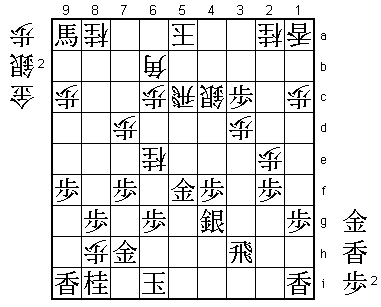 |
| Diagram F |
A natural defense against this tesuji pawn drop would be K-7i, in order to recapture with the king after ... Px8i+, but with the knight on 6e covering the 7g square this would be quite dangerous. After ... Px8i; Kx8i S*7g, White's attack looks unstoppable.
But if you look a little more deeply into the position after ... N*6e, you will notice that Black is not really in great danger. The knight is only effective in that it covers the 7g square, so if it ceased to do so it would not be a very frightening presence. In other words, even if White were to play ... Nx5g=; K-7i or Nx5g+, Black would lose a gold but his king would be safe for the time being.
Thus we reach the conclusion that there is actually no need to save the gold on 5g here. As Diagram F shows, when you switch to defense in a position where you don't have to defend, you often get yourself into even greater danger. When one of your pieces is attacked, don't just move it automatically. Always look more deeply into the position and see if there isn't some way of taking advantage of this moment to attack rather than defend.
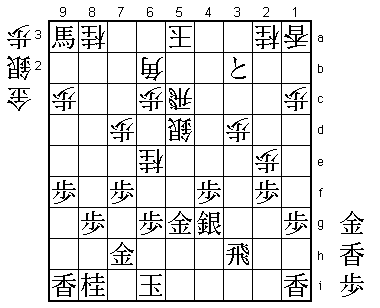 |
| Diagram 6 |
From Diagram 5, the game continued ... N*6e; P*5d Sx5d; P-3b+ (Diagram 6) ... P*8h; +Bx8a Px8i+; +B-7b and White resigned. (Resignation Diagram)
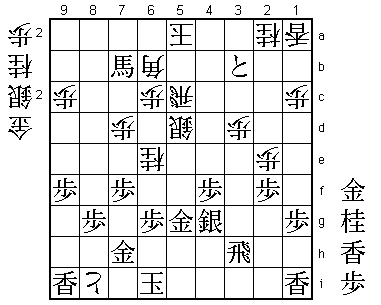 |
| Resignation Diagram |
The position in Diagram 6 after P-3b+ looks quite tricky, but it is actually easy to analyze. This is because it is possible to count the number of moves it would take each side to win. Looking at the straight-line variations, White's king can be put in brinkmate in two moves: +Bx8a and +B-7b. The question, therefore, is whether Black's king can be put in brinkmate or threatened with mate in two moves. While Black plays +Bx8a and +B-7b, White can play P*8h and Px8i+, but does this threaten mate? If not, the position is a win for Black. As far as the curved-line variations are concerned, after ... P*8h; +Bx8a, White could prolong the game with ... G*7a, but Black can continue the assault with +Bx7a Bx7a; G*7b (Diagram G), when White has no way of escape.
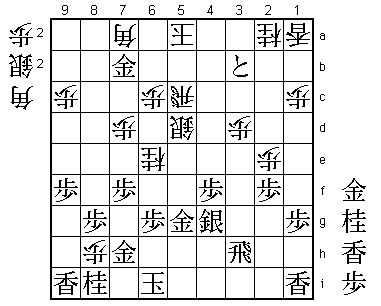 |
| Diagram G |
Generally speaking, the chances of prolonging the game by defending are higher when the king is in the open. When it is in a confined castle such as the anaguma (bear-in-the-hole), it is hard to extend the number of moves significantly. Here White's king is hemmed in by the tokin on 3b, so it is difficult to prolong the game.
After +B-7b, White resigned (Resignation Diagram). If ... Nx5g=; K-6h G*6i; K-7g (Diagram H) and Black's king escapes. If now ... N*8e; K-8f and the checks run out, or ... N*6e and the king runs away to 8f and 9g, where it cannot be put in check.
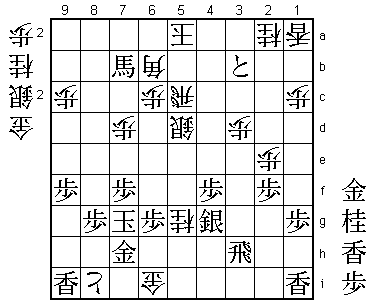 |
| Diagram H |
In this game, I very much wanted to play the fascinating line featuring major piece fireworks that we examined from Diagram 1 to Diagram E, but I was forced to give it up because White had just one good defensive line in P*3c and K-4a. Shogi is not the kind of game that is decided by such spectacular sequences when neither player makes a mistake.
I gave up the lightning attack and chose the plain and simple route. Even so, the variations lurking below the surface left a deep impression on me. These wild variations lay concealed in the bedrock of this unspectacular game, in which the players eliminated such possibilities by avoiding mistakes.